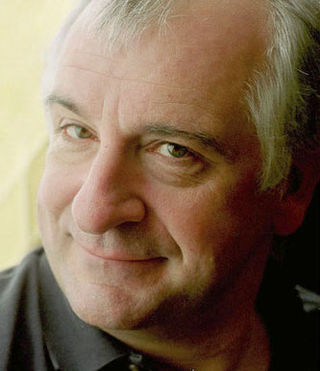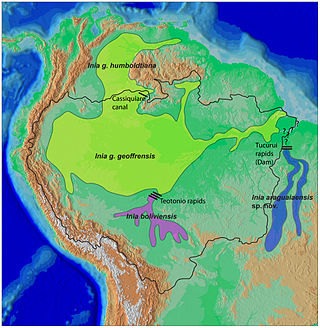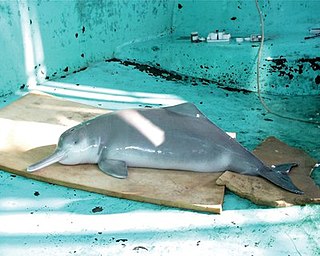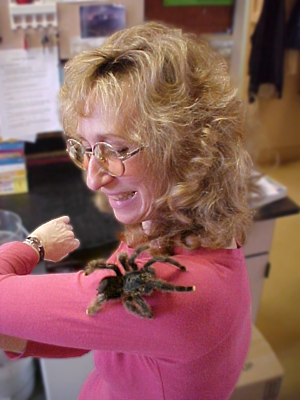
Douglas Noel Adams was an English author, humourist, and screenwriter, best known as the creator of The Hitchhiker's Guide to the Galaxy (HHGTTG). Originally a 1978 BBC radio comedy, The Hitchhiker's Guide to the Galaxy developed into a "trilogy" of five books which sold more than 15 million copies in his lifetime. It was further developed into a television series, several stage plays, comics, a video game, and a 2005 feature film. Adams's contribution to UK radio is commemorated in The Radio Academy's Hall of Fame.

The Hitchhiker's Guide to the Galaxy is a comedy science fiction franchise created by Douglas Adams. Originally a 1978 radio comedy broadcast on BBC Radio 4, it was later adapted to other formats, including novels, stage shows, comic books, a 1981 TV series, a 1984 text adventure game, and 2005 feature film.

Mostly Harmless is a 1992 novel by Douglas Adams and the fifth book in the Hitchhiker's Guide to the Galaxy series. It is described on the cover of the first edition as "The fifth book in the increasingly inaccurately named Hitchhikers Trilogy". It was the last Hitchhiker's book written by Adams and his final book released in his lifetime.

So Long, and Thanks for All the Fish is the fourth book of the Hitchhiker's Guide to the Galaxy "trilogy of six books" written by Douglas Adams. Its title is the message left by the dolphins when they departed Planet Earth just before it was demolished to make way for a hyperspace bypass, as described in The Hitchhiker's Guide to the Galaxy. A song of the same name was featured in the 2005 film adaptation of The Hitchhiker's Guide to the Galaxy.

The kākāpō, sometimes known as the owl parrot or owl-faced parrot, is a species of large, nocturnal, ground-dwelling parrot of the superfamily Strigopoidea. It is endemic to New Zealand.

River dolphins are a polyphyletic group of fully aquatic mammals that reside exclusively in freshwater or brackish water. They are an informal grouping of dolphins, which itself is a paraphyletic group within the infraorder Cetacea. Extant river dolphins are placed in two superfamilies, Platanistoidea and Inioidea. They comprise the families Platanistidae, the possibly extinct Lipotidae, Iniidae and Pontoporiidae. There are five extant species of river dolphins. River dolphins, alongside other cetaceans, belong to the clade Artiodactyla, with even-toed ungulates, and their closest living relatives the hippopotamuses, from which they diverged about 40 million years ago. Specific types of dolphins can be pink.
The Burkiss Way is a BBC Radio 4 sketch comedy series, originally broadcast between August 1976 and November 1980. It was written by Andrew Marshall and David Renwick, with additional material in series 1 and 2 by John Mason, Colin Bostock-Smith, Douglas Adams, John Lloyd, Tom Magee Englefield and Liz Pollock.
The Hitchhiker's Guide to the Galaxy is a comic science fiction series created by Douglas Adams that has become popular among fans of the genre and members of the scientific community. Phrases from it are widely recognised and often used in reference to, but outside the context of, the source material. Many writers on popular science, such as Fred Alan Wolf, Paul Davies, and Michio Kaku, have used quotations in their books to illustrate facts about cosmology or philosophy.

Mark Carwardine is a British conservationist who achieved widespread recognition with his 20-year conservation project – Last Chance to See – which involved round-the-world expeditions with Douglas Adams and Stephen Fry. The first series was aired on BBC Radio 4 in 1990, and the second, a TV series, on BBC2 in 2009. There are two books about the project: Last Chance to See, which he co-wrote with Adams (1990), and Last Chance to See: In the footsteps of Douglas Adams (2009). He is a leading and outspoken conservationist, and a prolific broadcaster, columnist and photographer.

The Hitchhiker's Guide to the Galaxy is a science fiction comedy radio series primarily written by Douglas Adams. It was originally broadcast in the United Kingdom by BBC Radio 4 in 1978, and afterwards the BBC World Service, National Public Radio in the US and CBC Radio in Canada. The series was the first radio comedy programme to be produced in stereo, and was innovative in its use of music and sound effects, winning a number of awards.
Douglas Adams at the BBC is a three CD set released by BBC Audio in 2004 (ISBN 0-563-49404-2). By using extracts from many radio and TV productions, the three discs cover Douglas Adams's association with BBC Radio and TV from 1974 to 2001, and also include tributes to Adams that were transmitted between 2001 and 2003. Subjects are covered in an A-Z format. Linking narration on all three discs is provided by Simon Jones. Several of the sketches, many of which are included for the first time since their original transmissions, had been discussed in biographies of Adams. In addition, the complete script for "The Lost Hitchhiker Sketch" appears in the 25th anniversary edition of The Hitchhiker's Guide to the Galaxy: The Original Radio Scripts. Disc one covers subjects A to G, disc two covers subjects H to P, and disc three covers subjects Q to Z.
The Hitchhiker's Guide to the Future was a four-part radio series hosted by Douglas Adams. It was first broadcast on BBC Radio 4 in October 2000, and repeated in April and May 2001, and September 2014. Because the radio series turned out to be Adams's final project for the BBC before his death, all four episodes are still available for download from the Radio 4 website. Extracts from the four programmes are also available for listening within the Douglas Adams at the BBC collection.
Nosy Mangabe is a small island reserve located in Antongil Bay about 2 km (1.2 mi) offshore from the town of Maroantsetra in north-east Madagascar. it is accessible by small boat and is part of the larger Masoala National Park complex. It is a tropical rainforest national park for a species of lemur, the aye-aye. It lies close enough to Maroantsetra for a day trip, although an overnight stay is recommended for seeing the nocturnal aye-aye.

Douglas Adams's Guide to The Hitch-Hiker's Guide to the Galaxy is a BBC Radio production sold as an audio book on two cassette tapes. The programme was partially broadcast by BBC Radio 4 as a 40-minute feature titled The Guide to 20 Years' Hitch-Hiking on 5 March 1998, marking the 20th anniversary of the first radio programme in the Hitchhiker's Guide to the Galaxy series.

The baiji, is a probably extinct species of freshwater dolphin native to the Yangtze river system in China. It is thought to be the first dolphin species driven to extinction due to the impact of humans. This dolphin is listed as "critically endangered: possibly extinct" by the IUCN, has not been seen in 20 years, and several surveys of the Yangtze have failed to find it. The species is also called the Chinese river dolphin, Yangtze river dolphin, Yangtze dolphin, and whitefin dolphin. The genus name Lipotes means "left behind" and the species epithet vexillifer means "flag bearer". It is nicknamed the "Goddess of the Yangtze" and was regarded as the goddess of protection by local fishermen and boatmen. It is not to be confused with the Chinese white dolphin or the finless porpoise. This is the only species in the genus Lipotes.

Last Chance to See is a wildlife documentary first broadcast on BBC Two in the United Kingdom during September and October 2009. The series is a follow-up of the 1989 radio series, also called Last Chance to See, in which Douglas Adams and Mark Carwardine set out to find endangered animals. In this updated television version, produced for the BBC, Stephen Fry and Carwardine revisit the animals originally featured to see how they're getting on almost 20 years later.

Peter Geoffrey Francis Jones was an English actor, screenwriter and broadcaster.

Sirocco is a kākāpō, a large, flightless, nocturnal parrot, and one of the remaining living individuals numbering only 244. He achieved individual fame following an incident on the BBC television series Last Chance to See in which he attempted to mate with zoologist Mark Carwardine. Subsequent featuring of the incident on television channels around the world and on YouTube resulted in Sirocco becoming internationally known. In his home country of New Zealand, Sirocco has attracted thousands of people during "personal" appearances, and in January 2010 was given the title of Official Spokesbird for Conservation by Prime Minister John Key. In this role, Sirocco helps advocate for conservation through human intermediaries on social media sites and blogs.
Deadly... is a strand of British wildlife documentary programming aimed principally at children and young people, which is broadcast on CBBC on BBC One and Two and on the CBBC Channel. It is presented by Steve Backshall, with Naomi Wilkinson as co-host on Live 'n Deadly, and Barney Harwood as co-host on Natural Born Hunters. The strand began with a single series called Deadly 60, and has subsequently expanded into a number of spin-offs, re-edits and follow-up versions.

Sy Montgomery is an American naturalist, author, and scriptwriter who writes for children as well as adults.















